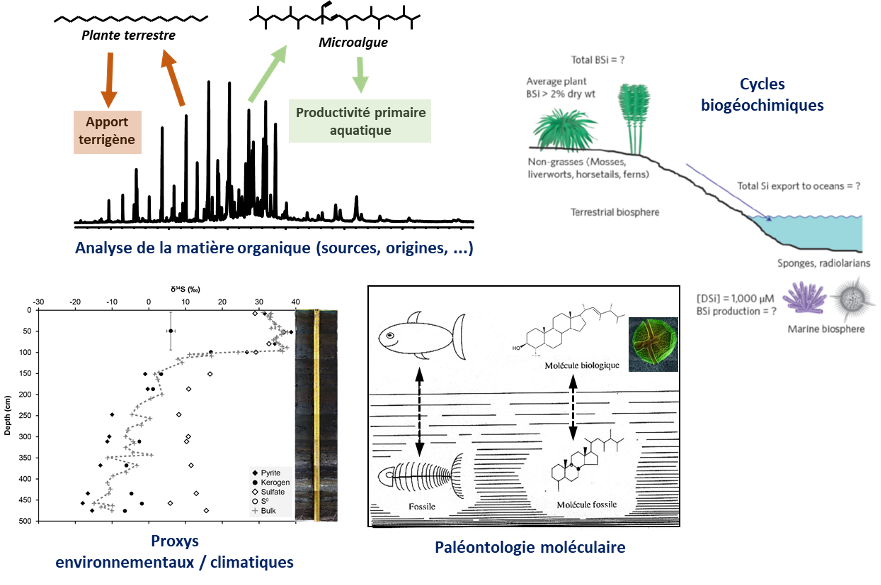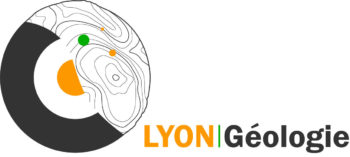Biosignatures
Recognizing and interpreting the presence of different types of Biosignatures in actual and past environments is essential in Geosciences. This allows in particular to define the origin (biologic/anthropogenic, plant/animal, ...) of organic matter in these environments, to understand the history and dynamics of aquatic ecosystems (biogeochemical cycles and communities structure), to reconstruct (paleo)environments and (paleo)climates, to characterize biogeochemical processes at the interfaces between the Biosphere and the Geosphere (eg, methane cycle), to develop new indicators of environmental changes (proxies of temperature, salinity, productivity, etc.) , to highlight the radiation or extinction of certain families of organisms over geological time scales (molecular paleontology), etc.

The biosignatures concerned will essentially be the bulk, molecular and isotopic composition (13C, 14C, 15N, D/H, 34S, …) of the organic matter synthesized by living (micro)organisms or its degradation products, as well as some of the inorganic components (silica, calcite, …).

